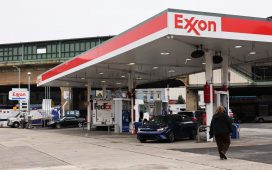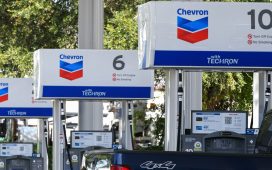After more than a decade involving little new construction activity, U.S. projects designed to remove carbon dioxide (CO₂) from the atmosphere and either store it deep underground or put it to some beneficial use are seeing a resurgence in popularity.
Proposed projects involving carbon capture and storage (CCS) and its close cousin technology, carbon capture utilization and storage (CCUS), cover a broad spectrum of applications, everything from pulling directly from the air using industrial-scale plants to nature-based solutions, such as encouraging ranchers to capture the greenhouse gas in grasslands.
The first generation of CCS and CCUS projects largely revolved around removing CO₂ emissions, as a way to allow the burning of “clean” coal in power plants. However, the current carbon capture renaissance is being driven by a growing realization among the world’s climate experts that efforts to just reduce emissions — largely produced by burning fossil fuels — will not be enough to forestall the worst effects of global warming.
In a recent Stanford University webinar, International Energy Agency executive director Fathi Birol said 50% of the emissions reductions needed to reach the goal of net zero emissions by 2050 “need to come from technologies that are not commercially available.” Birol said the United States has been the leader of innovation and he expects the incoming Biden administration to lead the way in promoting new low-emission technologies such as CCS and CCUS.
Howard Herzog, a senior research engineer in the MIT Energy Initiative, said the previous peak of interest in carbon capture projects occurred around 2008 and 2009, when investors thought that Congress would soon introduce a cap and trade policy for carbon.
“People thought markets were going to develop in the near term but those markets didn’t develop,” he said in an interview. “Obama got elected but he chose health care and after that there was no other big policy push that he was going to get through in his administration.”
However, Herzog said the world has changed a great deal since the early days of the Obama administration and the case for carbon capture is even stronger today than it was then.
“If we try to get to net zero at some point, I think carbon capture is going to have to play a role and that role may be a little changed from the past,” he said. There are unlikely to be more carbon capture projects build alongside coal-fired power plants, because the markets for coal and electricity have changed so much in the intervening years.
“But I think you’re going to see carbon capture in the industrial sector: steel, chemical plants, and oil and gas facilities,” he said. This will take place even as oil and gas facilities increasingly will play a less dominant role in the global energy structure, as the world moves toward net-zero emissions.
Drawing CO₂ from the air
In one of the most ambitious U.S. carbon capture projects under consideration, Oxy Low Carbon Ventures, a subsidiary of Occidental Petroleum, plans to build a plant in the oil-producing Permian Basin to suck CO₂ directly out of the air and inject it into oil wells to coax more crude out of the ground.
The project, which developers plan to build using technology developed by Carbon Engineering, based in Squamish, British Columbia, will be capable of removing 1 million metric tons of CO₂ per year from the air. The plant is expected to be built and to go into operation by late 2024 or early 2025, Steve Oldham, Carbon Engineering’s CEO, said in an interview.
Oldham said the plant’s direct-air capture technology will allow Oxy to produce oil with a net-negative carbon content.
“When you’re using atmospheric CO₂, you’re putting more CO₂ in the ground than is contained in the crude that comes up. Essentially, you’ve decarbonized your fossil fuel at the source, because you’ve removed its carbon footprint from the atmosphere,” he said.
The process of extracting CO₂ from the air and using it in enhanced oil recovery (EOR) generates revenues for the project in several ways. The CO₂ itself has a product value is $25 per ton in the Permian Basin is; secondly, there is a 45Q federal tax credit of $35 per ton for using CO₂ for EOR.
A natural capture solution
On the other end of the industrial scale from Occidental’s direct-air capture plant, a group of academics is promoting an all-natural carbon capture solution. A working group led by Rice University’s Baker Institute for Public Policy has developed a measurement-based standard — “BCarbon” — to incentivize ranchers and farmers to plant grasslands on their property removing CO₂ from the atmosphere and storing it in the soil as organic carbon.
“We are focused on nature-based solutions,” Jim Blackburn, a professor in the practice of environmental law at Rice and Baker Institute Rice faculty scholar, said in an interview.
“Photosynthesis is about as good a technology as you could hope for, but with photosynthesis the issue is organizing the landowners and putting a system together to issue credits,” he said.
Under the credit program, landowners will be given credits for turning their unplowed fields into grasslands and agreeing to leave the land undisturbed for a period of 10 years.
Blackburn said the credit standard devised by the Rice team is similar to an international standard for carbon capture in forestlands, but that standard does not work well in the U.S. prairielands where most property is in private, rather than public, hands. A natural carbon capture credit system is much cheaper than more technological capture solutions and is easily scalable to match the enormity of the carbon problem, he said.
“We think ultimately there could be one billion tons of carbon dioxide storage capacity per year, which is about a sixth of the U.S. total emissions,” he said. In addition, the credit system uses the atmosphere itself as the conveyance device to offset carbon emissions anywhere in the world. “If you put in carbon dioxide in the air in Houston you can take it out of the air most anywhere that you want to,” Blackburn said.








